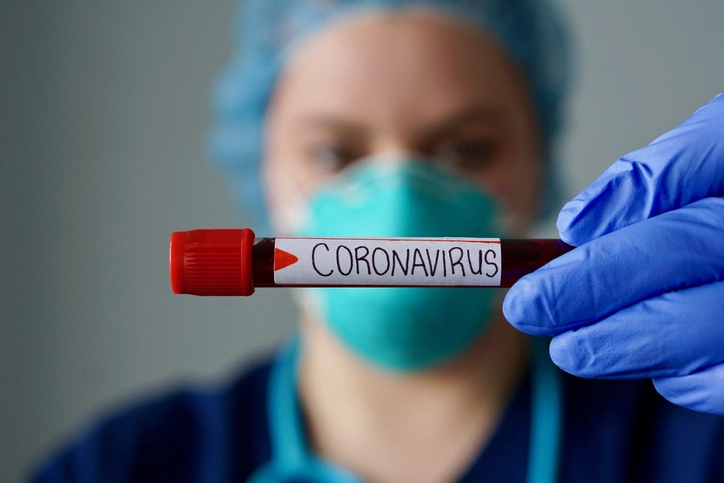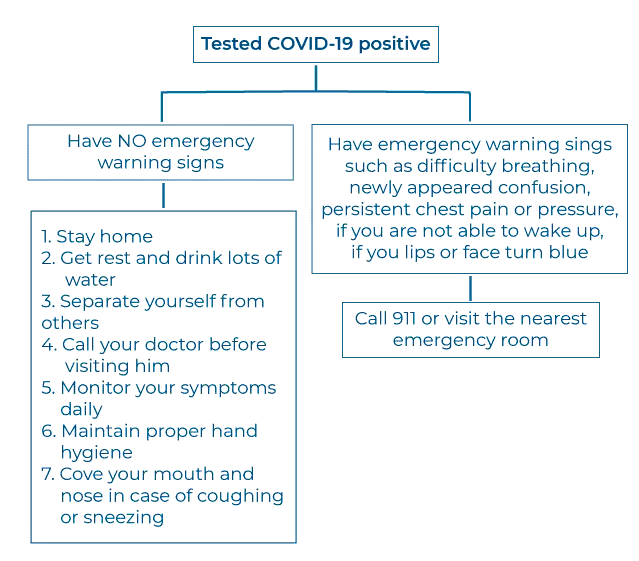
The newly discovered coronavirus (COVID-19) is one of the main concerns worldwide. This infection was firstly diagnosed in Wuhan, China, and soon was spread throughout the globe by infecting millions of people. The majority of us at least once heard about this virus. However, in this article we have tried to summarize the most updated information at the moment (May 2020). So, you will be able to distinguish between scientifically evident facts from myths and misinformation.
For the daily updates on COVID-19 situation and facts, please visit the official website of the Centers for Disease Control and Prevention (CDC).
In this section, you will get general information on COVID-19, the way it is transited, its symptoms, and complications. It illustrates the most updated information at this point from the most reliable sources.
The novel coronavirus (COVID-19), is a viral, respiratory tract infection firstly identified in December 2019. Previously, there were 4 serotypes of coronaviruses causing cold-like symptoms in humans, and 2 other serotypes, namely SARS-CoV causing the Severe Acute Respiratory Syndrome, and Middle East Respiratory Syndrome, respectively. However, COVID-19 is the one that causes coronavirus disease and is the reason for the pandemic.1, 2
The novel coronavirus is spread through droplet transmission. This means that a susceptible person may get the virus when: 3
Today, researchers are studying additional routes of COVID-19 transmission such as through contaminated air or food. However, there is no evidence of such transmission so far.
Recently, the researchers from the University of Alabama at Birmingham (UAB) came up with the estimated timeframe of COVID-19 surviving on the surfaces of different materials. The table below summarizes that information. 4
| Material | Average survival time |
| Stainless steel | 72 hours |
| Plastic | 72 hours |
| Cardboard | 24 hours |
| Copper | 4 hours |
| Air | 3 hours |
Some factors may slightly alter these numbers such as humidity and weather.
In the majority of cases the period between being infected and developing the first symptoms (the incubation period) for the novel coronavirus (COVID-19) is 5-6 days. However, this period may extend to 14 days.
The list of COVID-19 symptoms include but is not limited to: 5
The table below summarizes the known COVID-19 related health complications mentioned by the British Medical Journal (BMJ). 6
| Likelihood of development of the certain complication | Complication |
| Higher chance |
|
| Medium chance |
|
| Low chance |
|
Based on the available information, some people are at higher risk of getting the severe form of COVID-19 and related complications. These people are: 7
Nowadays, no vaccine against COVID-19 is available. This means that you may only protect yourself through avoiding the infection. In this section you will find information on the known preventive recommendations for the novel coronavirus. 8, 9
The purpose of wearing face masks is to protect others from getting the infection. The thing is that a significant number of COVID-19 positive individuals do not experience any symptoms and are not aware of their health status. However, these people may spread the infection to others and endanger the lives of those who are at risk of developing a severe form of the disease.
By wearing a face mask, it is possible to decrease the number of infected people by 75%.
Gloves are meant to protect you from getting COVID-19. However, it is always better to frequently wash and sanitize your hands rather than to wear gloves.
The novel coronavirus (COVID-19) as other respiratory infections have similarities with flu.
We have tried to make a comparison and show you the differences between COVID-19 and flu for you to be able to understand recognize your condition and make proper actions. You will also learn how contagious and deadly each of these two conditions is.
| COVID-19 | FLU |
|
|
Both have similar symptoms such as:
|
|
| 1 person may infect 2-3 people on average | 1 person may infect 1.3 people on average |
| 3-4% | 0.1% |
| Mostly 5-6 days (can be up to 14 days) | Mostly 2 days (ranges from 1-4 days) |
At this point, there 2 available tests for COVID-19, namely an antibody test and viral test. The first one shows whether you have been previously infected with COVID-19 or not (should not be used if you think you are currently sick). Whereas, the viral test detects the current infection.11, 12
First of all, you should know that the final decision on whether a person needs to be tested or not is up to health providers. However, there is a CDC guideline for both antibody and antigen testing.
These tests are needed for those who are currently infected with COVID-19. However, it doesn’t mean that every sick person should undergo testing. According to the CDC, COVID-19 positive people will mainly recover on their own without any complications and a need for special treatment. These tests are first recommended to the priority groups which are:
Remember: You need to contact your healthcare provider prior to deciding to get tested for COVID-19.
This tests are not made for those who currently has an active COVID-19 infection. It is mostly recommended to people who wants to know whether they have been previously infected or not. This is because antibodies develop at least 1-3 weeks after the exposure to the virus.
The table below summarizes the COVID-19 testing recommendations.
| Antigen testing (Viral tests) | Antibody testing (Serological tests) |
| ✔ | × |
| ✔ | × |
| ✔ | ✔ |
| × | ✔ |
| × | ✔ |
At our clinic, we perform the antibody testing.
It is known that current commercial antibody tests (ones that are available in private clinics) have some limitation with sensitivity (ability to identify COVID-19 antibodies among sick people) and specificity (ability to detect exclusively COVID-19 antibodies and not of other coronavirus types). Whereas the CDC‘s antibody tests have about 99% and 96% specificity and sensitivity respectable.
At this moment there is no answer to this question. However, various studies are conducted to be able to find out whether antibodies that are developed after getting COVID-19 can protect from re-infection or not, what concentration of antibodies will result in protective immunity, and for how long will this immunity last.
Tested sample and technique is different for 2 test types.
The required time for your test results to be ready depends on the type of the test. So, your test result will be ready:
The figure below describes the actions that should be taken by you once you learn you are COVID-19 positive. 13

According to the World Health Organization (WHO), those who recovered from COVID-19 need to undergo a follow-up testing for antigens twice, and only after having both results negative, they should be discharged from the hospital.
Whereas, CDC claims that the majority of people will recover soon and may not need to undergo testing at all. The health provider himself should decide whether a person needs testing or not.
Currently, there is no specific care for COVID-19. The only suggested way of COVID-19 management is supportive care.

35 W 36 Street Suite 7 E,
(btw 5 & 6 Ave)
New York, 10018
212.696.5900
Maintaining social distancing